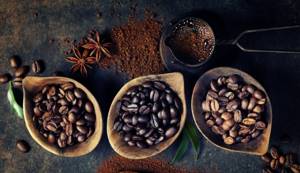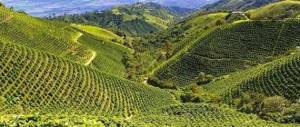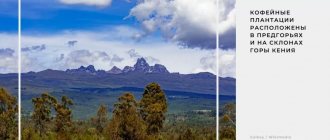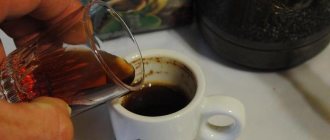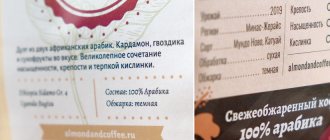More than 80 countries grow coffee trees. Coffee varieties are classified according to different parameters: the quality and type of beans, the type of processing of the fruit or the degree of roasting. Arabica grows on 75% of the plantations, the remaining fields are occupied by robusta. South America remains the leader in coffee bean exports, with Asia and Europe taking second and third places.
Coffee is one of the most invigorating and aromatic drinks.
The world's main suppliers of coffee products
In 2021, more than 130 million bags of coffee (60 kg each) were harvested in 50 coffee-producing countries. The main suppliers of products were the following countries (million bags):
- Brazil (35.5);
- Vietnam (27.9);
- Colombia (13.5);
- Indonesia (8.3);
- Honduras (7.1).
Brazil is the main supplier of coffee.
Ethiopia is among the world's top ten largest exporters, with a market share of 4% (up to 4 million bags).
Most of the Arabica coffee here grows in the wild. The most elite varieties of coffee are Sidamo, Harar and Yirgacheffe.
Coffee classification
Coffee is classified by type of tree, type and hardness of beans, processing method, country of origin, degree of roasting. Marks that indicate these parameters are always placed on product packaging.
By type of coffee tree
There are the following main types of coffee trees:
- Arabica. Its homeland is Ethiopia. Trees with red or red-violet fruits grow up to 5 m. Highlands (900-2100 m above sea level) are suitable for plantations. The light brown grains are shaped like an oval, up to 1.5 cm long. Arabica does not tolerate cold well and is susceptible to disease.
- Robusta. Congolese coffee can be distinguished from Arabica coffee by photographs. Trees that reach 10 m in height are grown at altitudes of up to 900 m. The beans are round in shape with a dark red shell.
- Liberica. On tall trees (up to 20 m), oval fruits up to 2.5 cm long appear. Due to its weak taste, it is not of great industrial value.
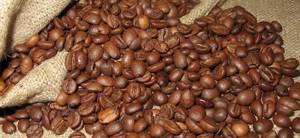
Arabica has a sweetish taste. Robusta is characterized by bitterness due to its high caffeine content (2.7%).
By type of coffee beans
There are large, medium, and small grains in size, but different countries have their own labeling. Indonesian manufacturers use the letters L, M, S. In Africa they mark AAA (large), AA (medium), AB (small). Depending on the hardness of the grains, the following markings are accepted:
- SHB - Arabica of the highest degree of hardness, growing at an altitude of 1400 m above sea level;
- HB - hard grains from plantations at an altitude of 1200-1400 m;
- MHB - fruits with medium hardness, growing on the plain;
- LGA is a soft bean used for low-quality coffee.
Elite Arabica coffee has the highest hardness.
According to the method of processing coffee beans
After harvesting, the fruits are subjected to dry or wet processing. In the first case, the grains are washed and left to dry for 3 weeks. They are then peeled and winnowed to remove any remaining skin. Wet processing involves placing the grains in water for 24 hours. Primary fermentation of the fruits occurs, so they become softer. After washing, the grains are cleaned using machines.
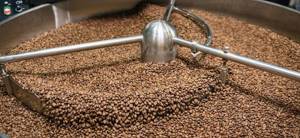
Coffee beans vary in how they are processed.
By grain quality
Labeling varies from region to region. The letters A, B, C are often used, which correspond to high, medium and low quality. Some manufacturers have the following designation:
- AA - the best variety;
- AB - good;
- BA - average quality coffee;
- BB is a low quality product.
EP (European preparation) means that up to 8 defects have been removed from 300 g of coffee.
AP (American) involves removing up to 23 defects from a similar quantity of goods.
By degree of freshness
There are 2 types of coffee beans. New crop means packaging immediately after harvesting and processing, old crop means last year's harvest. The mature label is placed on coffee that has been stored in a warehouse for 1 to 3 years. For more mature varieties (6-10 years), the designation vintage/aged coffee is used.
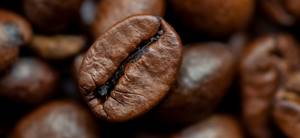
Coffee beans can be from last year's harvest or fresh.
By strength
The strength is influenced by the variety, grinding, roasting and brewing method. The following types of strong coffee are distinguished depending on the caffeine concentration (mg/ml):
- espresso - 2;
- in Turkish - 0.8;
- filter coffee - 0.6;
- Americano, cappuccino - 0.4.
Sometimes the strongest is called ristretto - black coffee prepared in a coffee machine.
This drink has a richer taste due to the presence of essential oils, but contains less caffeine than espresso.
By degree of roasting
Depending on the intensity of heat treatment, there are the following degrees of roasting:
- Easy. The process lasts until the first click. The grains become dry and acquire a light brown color.
- Average. The beans turn out darker.
- Strong. The grains become dark brown and caramelize.
- Highest degree. The fruits are glossy due to the essential oil and acquire a black-brown color.
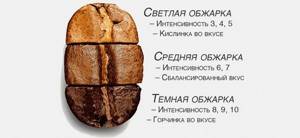
Light processing is suitable for high-mountain varieties with a loose structure. Strong coffee is used to make coffee from Cuba, Guatemala, and Africa.
By country of production
South American varieties have a mild flavor with medium intensity. Grains from Ethiopia, Burundi, Zambia, and Uganda are famous for their strength. Congo grows Robusta with a tart flavor, while Kenyan Arabica has a mild aftertaste.
There are classical Arabica plantations in Yemen. Robusta with a pronounced sweet aroma is common in Vietnam.
The most complete guide to types of coffee: from variety and roasting to recipes
Do you order a standard cappuccino so as not to waste time and not have to sort through the endless coffee list? Do you buy “just grains” and are constantly upset that you still don’t get the desired taste? Do you think that coffee only comes in beans, ground and instant? Experts will help you understand the classification of coffee and how to prepare it. After reading this article, you will definitely find coffee that you like and learn how to prepare it correctly.

Where does the coffee bean come from?
Let's start from the beginning. In nature, there are more than 90 species of plants of the genus Coffea, but four species are specially grown, and only two of them are used on an industrial scale.
Arabica
The most popular type of coffee with many man-made varieties. Arabica is a coffee classic with a rich, interesting taste, natural sourness and sweetness. However, Arabica itself is not very rich in caffeine (1-2% of the total chemical composition), so it is often mixed with Robusta.
The name "Arabica" has a geographical origin - people began to grow this type of coffee on the Arabian Peninsula in the 14th century.
Robusta
Not as good in taste as Arabica and has a characteristic bitterness. But Robusta is very tonic: it has 2 times more caffeine than its famous sister. This type of coffee is also good for its endurance: where delicate Arabica dies from temperature changes and diseases, Robusta easily bears fruit. In general, if you are looking for a truly strong coffee, then either pure Robusta or a mixture of Arabica and Robusta, with at least 30% Arabica and Robusta content, will suit you.
Liberica
Many people have heard about Liberica, but few have seen it, although in the coffee world it is considered potentially very interesting. The main advantage of Liberica is its amazing aroma, for which it is grown: essences from Liberian coffee are loved by the confectionery industry. But, for example, in Malaysia, it is more popular than Arabica and Robusta combined.
Excelsa
An even rarer coffee tree, grown in Africa and Southeast Asia. They both love and dislike it at the same time for its fruity and slightly “perfumy” taste with sourness. It is almost impossible to find Excelsa in its pure form in stores, but it is sometimes found in mixtures with Arabica.

Popular coffee varieties
There are about a thousand cultivated varieties of coffee, but they are all subspecies of Arabica and Robusta, or their hybrids. The most common are several subspecies of Arabica, which, when grown in different conditions, often give completely different tastes.
Coffee beans LavAzza “Qualita Oro”, 500 g 752 rub.
Lavazza “Qualita Oro” coffee beans, 250 g 351 rub.
Bean coffee Bushido “Red Katana”, 1000 g 1921 rub.
Coffee beans Lavazza “Qualita Oro”, 1000 g 1550 rub.
Coffee beans Jockey “Traditional”, 100 g 71 rub.
Compagnia Dell'arabica "Jamaica Blue Mountain" bean coffee, 1500 g 48,960 rub.
Coffee beans Coffesso “Colombia Single Origin Specialty”, 250 g -60%
362 rub. 904 rub.
Lavazza “Super Crema” coffee beans, 1000 g 1660 rub.
Coffee beans Good Plan "Ethiopia Guji", 250 g -65%
198 rub. 565 rub.
Coffee beans Lebo “Original”, 100 g 79 rub.
View all coffee beans
- Typika
It is a difficult and fastidious variety of coffee to cultivate, but with proper care it gives the best results. Among the Arabica Typica varieties are the “elite” of the coffee world: Jamaica Blue Mountain, Guatemala, Pluma Hidalgo, Sumatra, Kent, Java, etc.
The main feature of typika: natural sweetness and lack of bitterness.
- Bourbon
A natural mutation of Typica with a rich fruity flavor and complex acidity. The most famous varieties of bourbon: Ibairi, Jackson, Arusha, Yellow, Red, Orange, Pink Bourbons.
- Mocha
One of the most ancient types of Arabica, not bred by man, but formed thanks to nature. Mocha has small beans that, when roasted, produce a rich flavor with spicy notes and a slight heat.
- Maragogyp
Maragogype originated from the usual typica. The main difference of this variety is the huge grains, which are almost 3.5 times larger in size than Typica grains. Maragojipe always has a slight chocolate note in its taste.

Single-origin and blended coffees
All coffee presented in stores is divided into single varieties and blends. The advantage of single varieties is that you can feel the peculiar taste of each individual variety and select your favorite one. The advantage of blending is to harmoniously emphasize the positive properties of each component of the blend and create a product of stable quality.
Types of coffee by processing method
Despite the fact that the final buyer may find out the method of processing coffee cherries in quite rare cases, the processing greatly affects the final taste of the drink.
Dry (natural)
processing is more often used to reduce the cost of the process. With it, the berries are simply dried in the sun on a concrete or brick surface until they turn into something like raisins. After this, the outer layers are peeled off and the grain is sold. Correctly carried out processing gives the taste of coffee sweet shades of berries and fruits. Wrong – earthy taste.
Washed
processing means that the grains are removed from the berries using special equipment, but are not cleared of the sticky shell. In this form, they are placed in fermentation tanks for 1-2 days, and then washed with clean water and dried. Almost all specialty coffee is processed this way.
Honey (semi-washed processing)
– the result of technologists’ experiments. The process works differently in different countries. The difference with washed one is that less water is spent on processing. The finished drink has more sweetness in its taste.

Types of coffee by roasting method
The taste of finished coffee is a combination of natural data (variety and growing conditions) and roasting.
There are quite a few varieties of coffee according to the roasting method. In different sources you can find French, Italian, American, Viennese, but by and large, all types of roasting can be divided into 3 categories.
- Light
Light roasting is called roasting until the first crack (cod). These grains are light brown in color and there are no traces of oils on their surface. Light roasting is good because it most carefully preserves the natural taste of the grain with fruity notes and sourness. True, there is also a minus: if the grain is not initially the best, such roasting will highlight all the shortcomings. Best for alternatives: Chemex, pour over, French press.
Types of light roasts: cinnamon, light, New England, etc.
- Average
Universal roasting at temperatures from 210 to 225 degrees. The beans are chocolate colored, still free of oil stains on the surface. Medium roast is ideal for lovers of the classic taste of coffee. These grains can be prepared in any way.
Types of medium roast: American, city, full city, etc.
- Dark
Roasting at a temperature of 230 to 250 degrees. It is good because it hides the shortcomings of the original grain. It is bad because it does not allow the natural taste of coffee to reveal itself and is, by and large, only suitable for espresso.
Types of dark roast: French, Italian, Spanish.

Types of coffee by grinding degree
Different grinds are suitable for different methods of preparing coffee. The basic rule: the finer the fraction, the faster the coffee extraction will occur.
Ground coffee Lebo “Prince”, for Turkish, 100 g 79 rub.
Ground coffee Lavazza “Crema e Gusto”, 250 g 258 rub.
Ground coffee Lavazza “Qualita Oro”, in a tin can, 250 g 400 rub.
Ground coffee Paulig “Mokka”, 250 g 157 rub.
Ground coffee Lebo “Extra”, for Turkish, 75 g 61 rub.
Ground coffee Coffesso “Classico Italiano”, 5 sachets -25%
110 rub. 146 rub.
Ground coffee Jardin “Espresso di Milano”, 250 g 221 rub.
Ground coffee Fresco Arabica Barista, for brewing in a cup, 100 g -50%
90 rub. 179 rub.
Ground coffee Kurukahveci Mehmet Efendi, 100 g 165 rub.
Ground coffee Jockey “Traditional”, 100 g 65 rub.
View all ground coffee
The finest grinding “to dust” is for a cup into which hot water has been poured.
For the cezve, fine grinding is also used, but the feel is similar to particles of sea sand.
Medium grind is used for geyser coffee makers and coffee machines.
Coarse grind – for French press.

Coffee Brewing Methods
Actually, all methods of brewing coffee are divided into 2 main types: preparation in a coffee machine (espresso and all its derivatives) and alternative. Let's talk about them in more detail.
Espresso and its derivatives
Since the invention of the first coffee machine and the creation of the espresso recipe, the coffee world has changed. Engineer Luigi Bezzera, who invented the espresso machine in 1901, had no idea that a century later his brainchild would live in every coffee shop in the world.
Espresso
- a drink that is obtained by passing hot water through a filter with ground coffee under high pressure. In the classic recipe for 30 ml. water required 7 g of coffee. The resulting strong, aromatic and dense coffee can be used as a base for other recipes.
Americano
– espresso, to which 90 ml is added. hot water.
We wrote more about the rules for preparing Americano here>>
Lungo
- also a type of espresso. But at the same time, more water passes through a standard “tablet” with ground coffee. The extraction process also takes longer, so the coffee comes out with a slight bitterness.
Ristretto
- a type of thick and rich espresso, in which 15-20 ml are used for a standard 7 g of coffee. water.
Cappuccino
– espresso, with the addition of milk, whipped into a smooth, beautiful foam. In this case, milk whipped by a cappuccino maker is added to coffee. If you don't have a cappuccino maker at home, you can froth milk using a regular French press.
See how to do it correctly:
Latte
- espresso with milk. In this case, unlike cappuccino, coffee is added to the milk.
Raf
- coffee, invented in Moscow and received its name in honor of a client of one of the capital's coffee shops - Raphael. In addition to the same espresso, it contains liquid cream and sugar (often replaced with syrups). Video recipe for lavender raffa with coconut milk.
Read the history of the appearance of raf here>>
And be sure to try this lavender raf with coconut milk from our tester Natalia Prokhorenko
Macchiato
- espresso with milk, and the milk is not poured in, but put in with a spoon to form a circle with a coffee rim.
Affogato and glasse
– espresso with ice cream. In the first case, a scoop of ice cream is poured over coffee, and in the second, ice cream is added to the coffee.
There are other recipes for coffee with ice cream>>
Kon-panna
– espresso with a cap of whipped cream. It looks like Viennese coffee is also made.

Alternative methods of making coffee
Alternative (or slow-coffee, “slow coffee”) - all methods of making coffee, except for a coffee machine.
Copper pot “Dream”, 330 ml. 1180 rub.
Coffee grinder Hot Contents “Zambezia” RUR 3,678
Filter Clean Cup “Coffee funnel No. 1”, for preparing 1-2 cups of coffee, 1 piece 552 rub.
Coffee grinder “Columbia retro” RUB 2,458.
Geyser coffee maker Morosina, red (for 9 cups) RUB 2,205.
Filter Clean Cup “Coffee funnel No. 2”, for preparing 1-4 cups of coffee, 1 piece 621 rub.
Filter Clean Cup “Cone No. 1 for coffee”, for 1-2 cups, 25 pieces 173 rub.
Chemex coffee maker Samadoyo FT-003, volume 700 ml 2000 rub.
Filter Clean Cup “Coffee Cones No. 2”, for 1-4 cups, 25 pieces 207 rub.
French press Resto Kitchenware, 800 ml -15%
850 rub. 1000 rub.
View all coffee making accessories
Cezve
– a traditional vessel for making coffee, known since the times of the Ottoman Empire.
He came to Russia during the Russian-Turkish wars and received the name “Turk”. It’s easy to brew coffee in a cezve, it’s inexpensive and suitable for anyone. We wrote more about how to choose a Turk here>>
French press
– a popular device for brewing coffee, and an ideal find for the lazy, as well as Specialty lovers.
You can read how to choose a French press and brew really delicious coffee in it here >>
And in this video, our expert Vyacheslav Poschishchailo prepares exemplary coffee in a French press and shares unobvious secrets:
Geyser coffee maker (moka)
– the most popular coffee maker in Italy.
Inventor Alfonso Bialetti claimed that he had found a way to make espresso in any kitchen, but coffee prepared in a moka would still be different from that brewed in a coffee machine. Read more in this article>>
Chemex
- almost a chemical laboratory in the kitchen. A Chemex is a glass container with a funnel, shaped like a watch. It is considered the best option for making specialty coffee because it allows the natural taste to reveal itself.
Purover
– a compact funnel cup that comes complete with disposable or reusable filters. Spiral hot water through the ground coffee. The result is a drink with a soft and pleasant taste. See how it happens:
Cold brew
– both the name of the drink and the method of preparing coffee. It differs in that freshly ground coffee is poured with cold water and infused for 8 to 24 hours, depending on what taste and strength you want to get in the end. Read our material on how to brew cold brew correctly.

Recipes for making coffee drinks
All coffee recipes are divided into 2 types: hot and cold.
Hot coffee drinks
Espresso and all drinks based on it, coffee prepared in Turkish and other alternative methods, as well as coffee alcoholic cocktails, for example, Irish coffee, are served hot.
Each classic recipe has its own characteristics: from the choice of the correct roasting and grinding of beans to the water temperature, preparation time of the drink and various additives that better reveal the taste of coffee. For example, if you brew coffee in a Turkish coffee pot, try adding a pinch of salt to it:
When preparing coffee in a geyser coffee maker, use hot water instead of cold - this will make the drink more aromatic and not over-extract.
Cold coffee drinks
Iced coffee drinks can vary in how they are prepared. So, cold brew and nitro coffee (carbonated cold brew) are initially infused with cold water. Ice latte, frappe, and Vietnamese coffee (also popular throughout Southeast Asia) are made from chilled coffee with ice and cold milk.
The coffee itself in Vietnam is prepared in a special press, using, as a rule, robusta or mixtures with a high content of robusta. This unique device with two filters allows you to prepare coffee using the drip method, directly into the cup:
Frappe
– instant or ground coffee, whipped with milk, sugar and ice.
Ice latte
, made popular by Starbucks, is a drink of their chilled espresso, milk, syrup and ice, mixed by hand in a glass or shaker.
By the way, there is a myth that hot coffee has a more effective effect on the body than cold coffee. But this nuance depends only on your personal preferences (and on the time of year when you drink coffee). The amount of caffeine and its effect on your body does not depend on the temperature of the drink.
Rating of coffee producers
The list of the largest producers of beans and ground coffee includes the following companies:
- Lavazza.
- Paulig.
- Kimbo.
- Malongo.
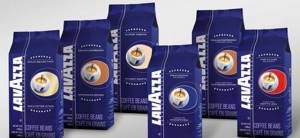
Lavazza is an Italian coffee company.
Jardin coffee is popular. The company sources Arabica from Kenya, Ethiopia, Indonesia, Colombia, and Guatemala.
Main types of coffee and their differences
The term “coffee varieties” refers to the different coffee trees that have been studied and described by botanists. There are about 40 such plants, and they have many differences in external characteristics and in the quality of beans.
The following types of coffee beans are used to make the aromatic drink:
- Robusta;
- Arabica;
- Liberica;
- Excelsa.
The most valuable and popular species from this list is Arabica, which is cultivated in 50 countries. Moreover, each region produces the same types of beans, but the finished drink has different taste and aroma qualities.
Arabica
This species is represented by a small tree, the height of which reaches 7 m. For convenience, on plantations it is cut to a level of 4 m. The fruits are elongated and convex, containing essential oils and caffeine in small quantities. The drink turns out aromatic and with a barely noticeable sweetness.
Arabica costs much more than other beans due to the specifics of cultivation. Plants are demanding on soil, often get sick, and grow on mountain slopes in places where there is no frost.
Arabica occupies 70% of the world coffee market and is represented by 45 varieties that are distinguished by an abundance of tastes and aromas.
Bourbon Santos is considered the best type from which beans and ground coffee are obtained. Arabica Burundi is in demand with a chocolate flavor, a sour aftertaste and a good strength of the drink.
One tree provides up to 5 kg of product, of which the weight of the finished coffee obtained by roasting is 1 kg. Fruit ripening is uneven. The ovaries formed after flowering grow and mature within 10 months. During this period, trees need to be watered, fertilized, and treated with pesticides to prevent diseases. The difficulty in growing trees lies in the fact that they reproduce using seeds.
Interesting! Coffee latte - composition and recipes for making it at home, history of origin
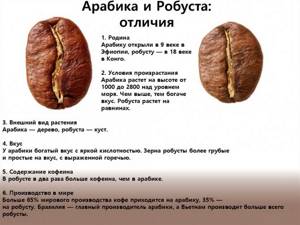
Robusta
The first trees were discovered on African territory, near the Congo River. Robusta contains a large amount of caffeine, adding bitterness and strength to finished drinks. Robusta is not produced in single-varietal format due to its light aroma and weak taste.
Robusta accounts for 30% of world cultivation. The trees are not picky about weather conditions, are not afraid of drought and low temperatures, practically do not get sick, and reproduce by cuttings, so growing them is not difficult. Full ripening of the grains takes about 11 months. The best fruits are sent for blending, and instant coffee is produced from small and substandard grains. Robusta is often mixed with Arabica to produce a strong, bitter drink.
Liberica
The plant is common in Africa, is not afraid of diseases and grows up to 10 m in height. Fruits weakly, while the fruits are bitter and have a characteristic aroma. Liberica is less in demand compared to previous varieties. But adding a small amount of Liberica to the coffee mixture creates an interesting bouquet of flavors.
Excelsa
This species is considered the rarest and most expensive. The plant reaches up to 20 m in height, which is why it is also called Tall. Excelsa is the most delicious type of grain, with a deep taste and rich aroma. Gourmets are willing to pay big money to enjoy this drink.
The best Excelsa variety is the “soft Colombian”, which is harvested by hand.

The best coffees
South America, Ethiopia and Yemen are considered to be the producers of the best products. Most plantations are located at an altitude of 1000 m above sea level, so the grains receive an unusual taste and rich aroma.
Brazilian Bourbon Santos
It received its name in honor of the island of the same name in the Caribbean Sea. For him, the first 3 crops are collected from the trees. The coffee turns out buttery and sour. The drink has a rich taste with a nutty-chocolate aroma and notes of orange.
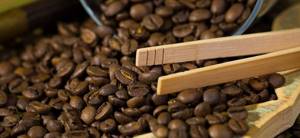
Brazilian Bourbon Santos is one of the best coffees.
Maragogyp
A distinctive feature is large grains, which are 3.5 times larger than standard Arabica. This drink has a complex taste: spicy with an admixture of wood, wild berries, nougat, and flowers. There is always sourness, the aroma includes tobacco notes.
Medellin
The Colombian variety grows at an altitude of 1800 m above sea level. The beans are lightly roasted to preserve the soft wine-fruit sourness with a caramel aftertaste. The description of the smell is dominated by a light nutty aroma.
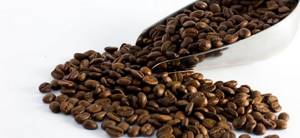
Medellin - Colombian coffee of the highest quality.
Colombia Excelso
Coffee plantations are located at an altitude of 900-1800 m in the Cordillera mountains. Columbia Excelso beans are medium in size, have a dense structure with light fruity sourness and sweetness. The aroma includes citrus or nutty notes.
Maracaibo
The photo of this Venezuelan variety shows the main difference from other types - yellow grains. Maracaibo, with a slight taste of dry white wine, grows in the states of Trujillo, Tachira, and Merida. The low quality of the raw materials is compensated by the grape aroma.
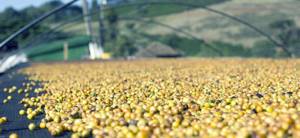
Maracaibo is one of the highest quality and delicious varieties of coffee.
Costa Rica
This coffee is considered elite. It has a spicy aroma and high strength. It has a multifaceted taste: cocoa is combined with fruit, vanilla, and honey notes.
Decaf
Decaffeinated coffee is made by treating green beans with solvent, steam, activated carbon or liquid carbon dioxide. This drink is more sour and soft compared to the others. In Russia, decaf has blue or green packaging, while abroad it is orange.
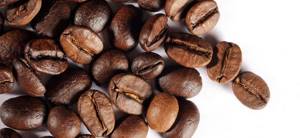
Decaf is produced by extracting caffeine from coffee beans.
Supremo
For this type of coffee, the highest quality beans with a length of more than 7 mm are selected. The variety is grown on the northern slopes of the Cordillera in Colombia. There is almost no acid in it, but the chocolate tastes good. The aftertaste contains apple and almond notes.
Dalat
This Arabica variety grows in the central part of Vietnam at an altitude of 1400-1600 m above sea level. Dalat is a strong coffee with fruity, caramel, and nutty undertones. The aroma includes notes of rosehip, lemongrass, and orange.
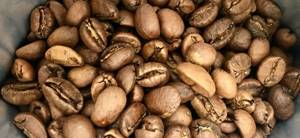
Dalat is a Vietnamese Arabica from a highland plantation.
Altura
Coffee beans are grown in the Sierra Maestra region of Cuba at an altitude of 600-800 m. The variety has little acid, but is strong. The drink is famous for its bitterness, which is combined with a tobacco flavor. The aroma is sweet, tart with an almond-caramel undertone.
Antigua
Elite coffee from Guatemala has a dense texture with slight sourness and sweetness. When characterizing Antigua, attention is paid to the thick, spicy aroma with notes of smoke. The drink smells of cocoa, prunes, and fruit.
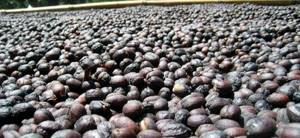
Antigua is an unusual spicy coffee.
Oksaka
The plantations are located in the southern states of Mexico. The Oksaka variety is distinguished by its light consistency, slight bitterness, and delicate aroma. Depending on the degree of roasting, the flavors of caramel, maple syrup, vanilla or hazelnut appear.
Antigua and Cobano
While the Antigua variety is characterized by the aroma of fruit and prunes, Cobano coffee from Guatemala is characterized by light floral notes. It is strong with a slight sourness and has a rich nutty taste. Grains are more expensive due to difficult care.
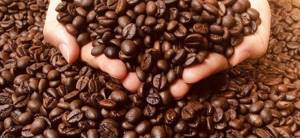
Kobano was named after the city where it is now grown.
El Salvador Chalatenango
Arabica grows on the Los Plains plain (altitude more than 1500 m above sea level). The drink of this variety has a thick structure with sweetness. At first you notice almonds, later a floral aftertaste appears.
Ethiopia Sidamo Mocha
Premium coffee plantations are located on the plateau of Sidamo Province (southwest Ethiopia). The drink has a velvety texture with rich fruity sourness. The taste reveals dark chocolate, nuts, cinnamon, cardamom. The aftertaste is reminiscent of jasmine. The aroma is dominated by chocolate and wine notes with an admixture of blackberries and apples.

Ethiopia Sidamo Mocha - forest grains.
Yemen Mocha
Yemeni coffee is grown in highland plantations (above 1000 m above sea level). With strong roasting, the flavor of cocoa with spices appears, with weak roasting - citrus. The aroma is dominated by fruit notes.
Popular varieties
There are several types of coffee, but mainly Arabica (70% of the total) and Robusta (30%) are grown on an industrial scale.
It is Arabica that is the most popular variety, which gave life to the entire huge variety of coffee.
Detailed information about each type can be found in the list below.
Robusta
It is used mainly in mixtures, gives good foam (creama) in espresso, for which it is especially appreciated by gourmets. It contains a lot of caffeine, which gives it bitterness. The taste is simple, rough, without nuances.
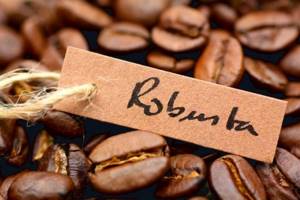
Robusta is used mainly in blends
Robusta can be grown both in the mountains and on the plains, but only in tropical climates. It can easily withstand heavy rains and heat, does not require careful care, and is not susceptible to disease. The trees of this variety are 3–4 times larger than those of Arabica, up to 13 meters high. Plantations - in Vietnam, Madagascar, Guinea.
Arabica
Feels good in the mountains, in subtropical climates, and in equatorial latitudes. Requires care, is picky about soil composition, and susceptible to disease. It grows well at altitudes from 600 to 2000 meters or higher. It is difficult to grow in such conditions, so it costs more.
All numerous varieties of Arabica have a variety of flavors and always have a slight sourness. Plantations - in Mexico, Jamaica, Zimbabwe, Brazil, Kenya, Colombia and other countries.
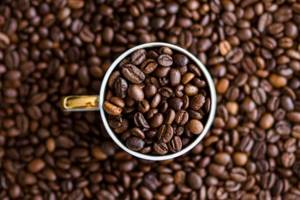
Arabica must have a slight sourness
Typika
The variety with which coffee began its victorious march around the world. The plants are tall (3.5-4 m), have a conical shape, a vertical trunk and branches with a slope of 50-70°. Typica has an excellent clean taste, sweet, rich, and the fruits are of high quality. But the variety is not characterized by high yield.
Geisha (Gesha)
The variety is very whimsical, prefers to grow at an altitude of 1400–1700 meters and in certain climate conditions, it has brittle branches. It became popular recently - in the 2000s, and was found in the 20s of the last century near the village of Gesha, for which it received its name. In addition to Ethiopia, it is grown in Peru, Colombia, Panama, Costa Rica, and Tanzania.
The berries have an oblong shape. It has a multifaceted taste with floral and fruity aromas and a pleasant aftertaste. It grows in Central and South America, with the largest number of plantations in Panama. Hacienda La Esmeralda, Lamastus Family Estates are the most famous producers.
This is an expensive and rare coffee; in cupping it tends to score above 90%.
Rume Sudan
Grows high in the mountains (1500-1800). Found in Sudan. Resistant to diseases, not as picky as Geisha. Tastes almost the same. Productivity is very low. The berries ripen at different times, making harvesting and processing difficult. Breeders are thinking about creating a good hybrid based on Rume Sudan, it has a very good taste.

The yield of the Rume Sudan variety is very low
Bourbon
This is the first result of the typical mutation. The trees were planted on Bourbon Island in the 18th century and changed to provide a new variety of coffee. The shape of the trees is similar to that of Typica, but less conical, with more branches forming a slight angle with the trunk. The leaves are wide and wavy at the edges.
The variety gives a good harvest, 30% more than the typical one, but does not fight diseases well. The taste is sweeter - with complex acidity, pronounced fruit and caramel notes. The best Bourbon grows high in the mountains.
Mundo Novo
A natural hybrid of Typica and Bourbon. Found in Brazil. It grows at an altitude of 1000-1600 m. Its taste is pleasant, slightly bitter, very rich.
This is a disease-resistant, productive variety, however, the latter quality is very dependent on the condition of the soil.
Pacas
Feels great at high altitudes and produces a good harvest. The taste has balanced acidity, pronounced spicy, floral and sweet notes.

The taste of the Pacas variety has pronounced spicy, floral and sweet notes.
Caturra
It was formed during the mutation of bourbon in Brazil near the city of the same name in the 40s of the last century. Grows well in the range of 500–1500 m. Adapts to any environment. Provides very high quality grain when planted at high altitudes. But in lower areas it produces larger yields.
Demanding of care, needs additional pollination. It has a bush-like shape. The leaves are large and wavy at the edges. The taste is light, with lemon notes. Grows in Colombia, Central America, Brazil.
Catuai
Formed as a result of crossing Mundo Novo and Caturra. The plant is low, the side branches form a slight angle with the trunk. The berries remain stable and do not fall off in strong winds or rain. The taste of this coffee is pleasant and rich.
The plant needs care and pollination.
Maracatu
A hybrid developed through the selection of Caturra and Maragogyp varieties. Grows in the mountains of Central America. The taste is complex, rich, with fruity notes.
Maragogyp
Occurred as a result of a natural mutation of the typica in Brazilian conditions. It differs from other coffee brethren in that it has the largest trees, leaves and berries. And its seeds are 3 times larger than ordinary ones, which is why they received the name “elephant grains.” This coffee grows well at high altitudes.
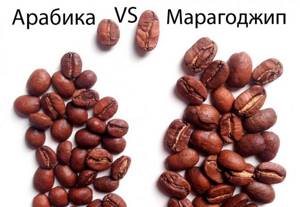
Comparison of the appearance of Arabica and Maragogyp
The tree has a large spacing between branches and does not differ in high yield. The taste of the Maragodzhip variety is rich, with citrus and floral notes. In addition to Brazil, it is grown in Mexico, Colombia, Nicaragua, and Guatemala. Different terroirs provide variations in quality and flavor characteristics.
Katimor
A high-yielding and disease-resistant hybrid, bred in Portugal in 1959 from Caturra and Timor. The latter is the result of crossing Arabica with Robusta and does not have a distinct taste. When properly processed, catimor produces grains that impart herbal and fruity aromas to the drink.
The variety has many varieties bred for different climatic conditions.
Villa Sarchi
Formed as a result of a natural mutation of bourbon. Discovered in the 50s of the last century in Costa Rica. The plant is small in size, making it resistant to strong winds and can grow at high altitudes. Not resistant to diseases.
Selected varieties SL-28 and SL-34. The first one tolerates drought well, the second one feels great with plenty of rainfall. Both varieties appeared in the 1930s at Scottish Laboratories in Kenya. SL-34 has a multi-faceted citrus taste and a pleasant sweet aftertaste. SL-28 – with blackcurrant shades.
Blue Mountain
Blue Mountain or Blue Mountains is a Jamaican variety of the Typica variety, produced only in Jamaica. It has its own trademark - Jamaica Blue Mountain. This is certified high class coffee. In cupping it has a score of about 90 points.
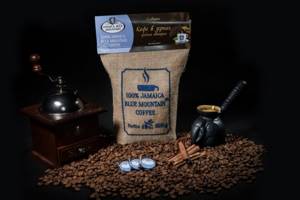
Jamaica Blue Mountain is a high quality certified coffee
It is grown high in the mountains in the parishes of St. Andrew, St. Thomas, Portland and St. Mary. It is processed in a wet way, sometimes traditionally - using fermentation in the sun.
The grains have good acidity, a sweet delicate aroma with orange, floral and sharply oily notes, in the taste and aftertaste there are chocolate and orange notes, and when the drink cools, there are mint notes.
Coffee is sorted into classes based on density and the presence of defects, and packed in barrels.
Select is a combination of different grains, they are packed in bags with an indication of arrival.
Elite coffees
The elite list includes the following species:
- Jamaica Blue Mountain. It combines notes of tobacco, caramel, pepper, and flowers.
- Old Java. The grains are stored in bags for 2 to 6 years to obtain a rich taste and aroma.
- Kopi Luwak. A special feature of the production is the fermentation of beans in the Luwak stomach.
- Kenya Ruiruiru (Kenya AA Ruiruiru). The drink has a cherry flavor with a tobacco aftertaste.
- Yellow bourbon. Brazilian grains give a taste of chocolate, peanuts, almonds, and the aftertaste is tobacco with earthy notes.

The premium class includes the soft Australian Skyberry and the exotic Ecuador Vilcabamba.
Coffee drink recipes
Coffee beans of varying degrees of roasting are mixed with milk, alcohol, cold water, honey, and spices. The result is new types of drinks.
Espresso
The strong drink was invented in Italy at the beginning of the 20th century. For classic espresso you will need 2 ingredients:
- 7 g medium ground coffee;
- 30 ml cold water.

The drink is prepared in a coffee machine or manually using a Turk. In the latter case, the raw material must be filled with water and placed on medium heat.
You must wait until foam appears. In a coffee machine, water is passed through the beans for 25 seconds.
Romano
This is espresso with the addition of lemon juice. For 30 ml of drink - 5 ml of fresh lemon juice. You can use the zest for decoration.
Ristretto
The drink is considered a subtype of espresso, but differs from the latter in its smaller volume and amount of caffeine. It contains the following ingredients:
- 7 g freshly ground coffee;
- 15 ml water.

Ristretto is prepared only in a coffee machine. Coffee is poured into the holder horn and pressed with tempera. Then turn on the water flow for 20 seconds. A dense foam of uniform brown color forms on the surface.
Mocha
Classic mocha consists of the following components:
- 1 tsp coffee beans;
- 50 mg dark chocolate;
- 50 ml milk (3.2% fat).
You need to brew espresso. Melt the chocolate on the stove and pour it into a tall glass. Then add warmed milk and coffee. Top with whipped cream.
Latte
The peculiarity of the drink is the foam up to 1 cm thick. According to the classic recipe, frothed milk (180 ml) is poured into coffee (50 - 60 ml). For lattes, medium or finely ground beans are used.

Latte is a coffee drink originating from Italy.
Macchiato
The picture shows the distinctive feature of a macchiato - fluffy foam. To prepare the drink, whisk 15 ml of chilled milk. It is then poured in a thin stream into a shot of espresso. You can add sugar, caramel syrup, cinnamon.
Cappuccino
The Italian drink is a mixture of a double portion of black coffee (60 ml) with the same amount of milk. First, beat it with a cappuccino maker until it doubles in size and carefully add it to the invigorating drink, holding the foam.

Cappuccino is a mixture of espresso and foamed milk.
Viennese coffee
The traditional recipe includes the following ingredients:
- 30 g ground coffee;
- 225 ml water;
- 115 ml milk.
Prepare espresso in a Turk and leave to cool for 10 minutes. The milk is heated to 70 °C, whipped with a mixer until thick foam is obtained. Mix with coffee. Foam is added on top.
Irish
Alcohol is an essential part of this drink. It includes the following components:
- 80 ml black coffee;
- 30 ml whipped cream (20-30% fat);
- 40 ml Irish whiskey (Baileys liqueur);
- 1 tsp Sahara.

The drink is poured into a tall glass with a handle. Sugar and warm alcohol are added to the liquid. Gently add whipped cream in a thin stream.
Americano
When preparing it, a portion of espresso (30 ml) is diluted with hot water (from 90 to 400 ml) in a large glass. This drink is weak due to the low concentration of caffeine. Fine or medium grind grains are suitable for Americano.
Frappe
The frappe requires the following ingredients:
- 1-2 tsp each instant coffee and sugar;
- 100 ml cold water;
- ice cubes.

Mix coffee with sugar in a container, pour 2 tbsp. water. Shake everything with a shaker. Place ice at the bottom of the glass and pour the finished coffee foam on top. Then add the rest of the water.
Glyase
To prepare the drink you will need 150 ml of coffee and 50 g of ice cream, which is placed on top. The use of rum, cognac or other alcohol is allowed. You can add vanilla, cinnamon, grated chocolate.
Honey raf
The drink recipe includes the following components:
- 50 ml black coffee;
- 100 ml cream (15% fat);
- 1 tsp light honey.

Dissolve the remaining elements in the brewed coffee. Whisk the resulting mixture and pour into a glass goblet. Sprinkle cinnamon on top.
Torre
An Italian cocktail is prepared with 30 ml of milk and 150 ml of coffee. The first component is whipped until a dense foam is obtained. Sugar is added to the finished coffee and poured into a tall glass. Place milk foam on top and sprinkle with cinnamon.
Additional questions and answers
About 1.6 billion cups of the invigorating drink are consumed around the world every day. Therefore, it is useful to know a few interesting facts about coffee.
How new varieties of coffee appear
To obtain new coffee trees, two methods are used - cuttings and planting seeds. In the first case, you can cross 2 species to get a hybrid. Cuttings take root quickly, so they can bear fruit in the first season after planting. The seeds take 6 weeks to germinate. With the second method, you need to wait about 5-6 years to get the first harvest.
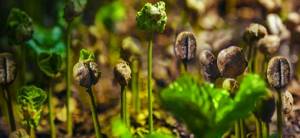
New varieties of coffee appear through planting seeds.
How many types of coffee are there?
From 2 to 3 thousand varieties are cultivated in the world. Most of them are located in Ethiopia, where some of the trees grow in the wild. Only about 12 varieties are grown in other regions.
What is the most popular type of coffee
The most common is Bourbon Santos from Brazil. Residents of North and South America and Scandinavia drink weak Americano or mochaccino. Muslims make black coffee with spices. Asians love coffee cocktails with ice cream and fruit. The Greeks prefer frappe, the Italians prefer Romano. Western Europe loves espresso.
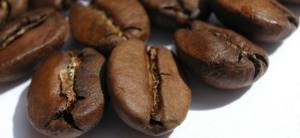
Bourbon Santos is the most common coffee variety.
What type of coffee is the strongest?
Robusta has a higher strength because it contains a lot of caffeine. The mixture called Death Wish Coffee consists of beans brought from Indonesia and Vietnam. The alkaloid content is 1.5-2 times higher than normal.
What is the most expensive type of coffee
Black Ivory (Thailand) is considered the most expensive. The entire small harvest is exported, so for 1 kg they ask for $1000. A cup of drink costs at least $50. A special feature of the production is the fermentation of grains in the stomach of elephants.
The best coffee varieties
Coffee beans are cultivated in different countries of the world, with different growing conditions and plant care, so each type acquires its own taste. The list of varieties is large, but we can name the main varieties of coffee that are in demand all over the world.
Names of coffee beans and their characteristics:
- Brazilian Bourbon Santos. The most common variety, bourbon from Brazil has a chocolate flavor, almond flavor and a slight citrus acidity.
- Maragogyp. Large and sweet beans, from which the drink turns out thick, with a unique amber. Cultivation regions: Mexico, Guatemala, Brazil.
- Medellin. High quality Colombian beans that are carefully harvested and sorted. Sweetish, have a caramel and chocolate flavor.
- Colombia Excelso. Fruits with a rich cocoa flavor, slight bitterness and sourness.
- Maracaibo. Venezuelan beans contain notes of dry wine, which gives them a flavor that is unparalleled.
- Oksaka. A Mexican product that smells of nuts and vanilla; a slight bitterness is felt in the finished drink.
- Antigua and Cobano. Grown in Guatemala, they have a refreshing strength and pleasant acidity.
- El Salvador Jalatenango. The grains have an exquisite floral amber and almond flavor.
- Ethiopia Mocha. Coffee with a taste of wine and fruit, with a pleasant coffee-apple aftertaste.
- Yemen Moha. The sweet aroma of fruit is combined with a characteristic sourness.
Interesting! Cappuccino with chocolate chips in bags
It is difficult to say which type of coffee is better; each of them has high taste qualities and can satisfy the requirements of gourmets and connoisseurs of coffee drinks.
